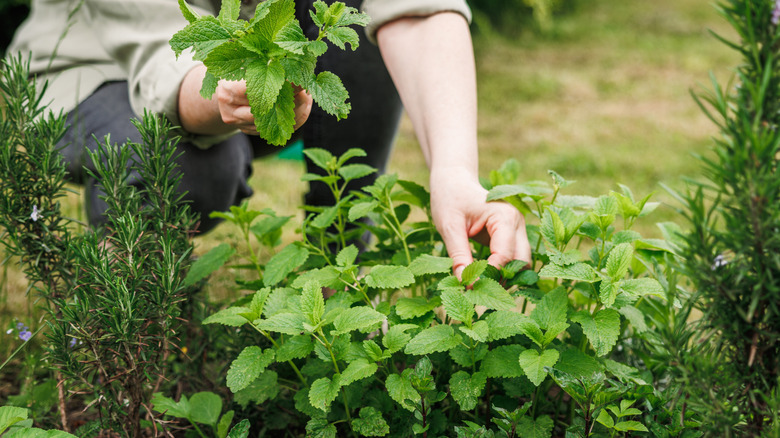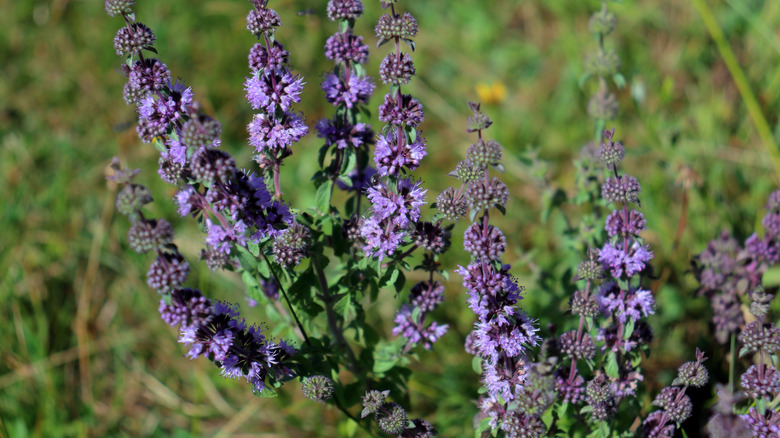Don't Mistake This Toxic, Invasive Herb For Peppermint
With hundreds of thousands of plant species growing around the world, keeping track of what's what is nearly impossible. While many plants are completely harmless and safe to handle, others are highly dangerous, as they contain things toxins can irritate the skin, make you sick, or in extreme cases, be fatal. What makes some poisonous plants even trickier to spot are the poisonous plant look-alikes lurking about. Some of the most toxic species out there resemble common, harmless varieties, making them appear less threatening.
Take pennyroyal (Mentha pulegium) for example. This invasive herb is often mistaken for peppermint (Mentha piperita). Despite the pleasing aroma its foliage gives off, it actually contains an oil that, when extracted and ingested, can be fatally toxic to humans. Your furry family members should also avoid ingesting the plant, as it can be harmful (though it has been used in sprays to manage fleas, suggesting skin exposure is tolerable for dogs). Pennyroyal is often confused with peppermint not only because it belongs to the mint family (Lamiaceae), but also because they share similar traits: Both emit a strong minty scent, have square stems, and their leaves grow opposite each other.
Differences between pennyroyal and peppermint
Pennyroyal and peppermint's similar scent and appearance can easily make it difficult to notice the differences between them at first glance. Both plants sprout tall, purple flowers from the center, with leaves sitting just below the blooms. However, a key difference is the appearance of these floral clusters. In peppermint, they form tighter clusters in shades of violet or lavender, whereas on pennyroyal, they are more defined — almost stacked one above the other. Pennyroyal's floral clusters are also less vibrant in color, with a light lilac hue.
Another noticeable difference between pennyroyal and peppermint lies in their leaves. Pennyroyal leaves are slightly more rounded and less lime green, whereas peppermint leaves are more oval-shaped with distinctly pointed tips. Still, the similarities may outweigh the differences, as both plants can grow up to two feet tall.
Nevertheless, peppermint thrives in a variety of conditions, including moist environments, and can be found across various U.S. states, whereas pennyroyal is typically found in West Coast regions (hardiness zones 6 through 9). Yet, with the right conditions, such as disturbed soils or wetlands, pennyroyal can survive. Still, both plants have their uses, peppermint known for its calming effects on the stomach and digestive system, while pennyroyal is sometimes relied on as a potential solution for deterring mosquitoes and pests.

